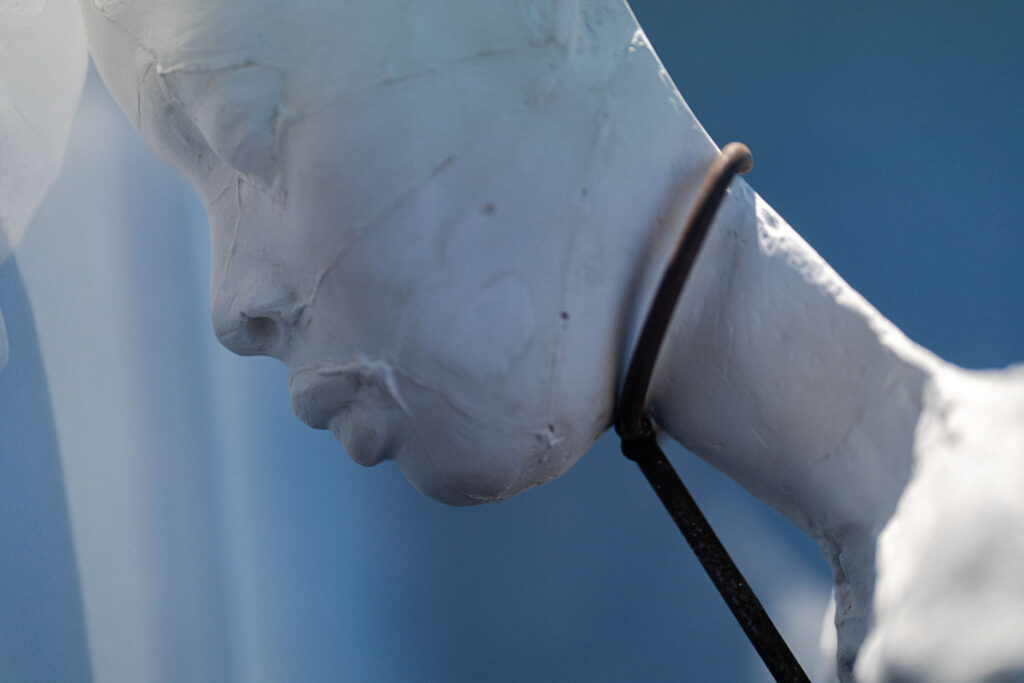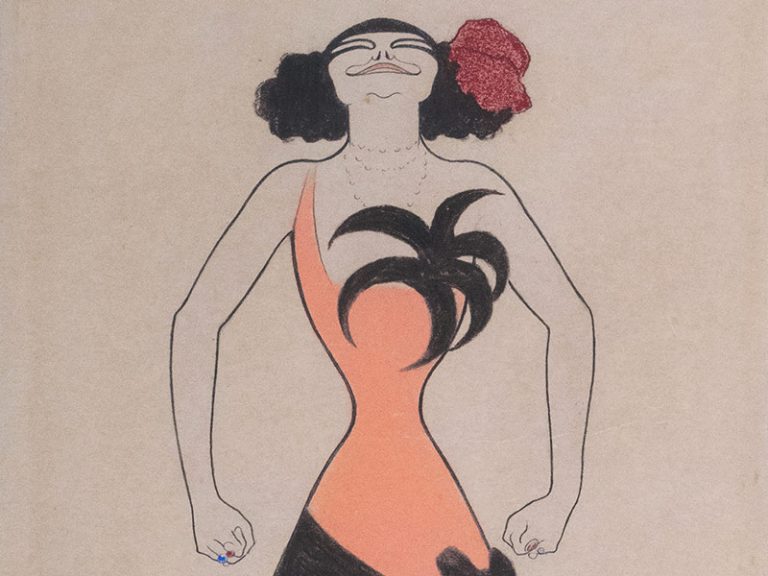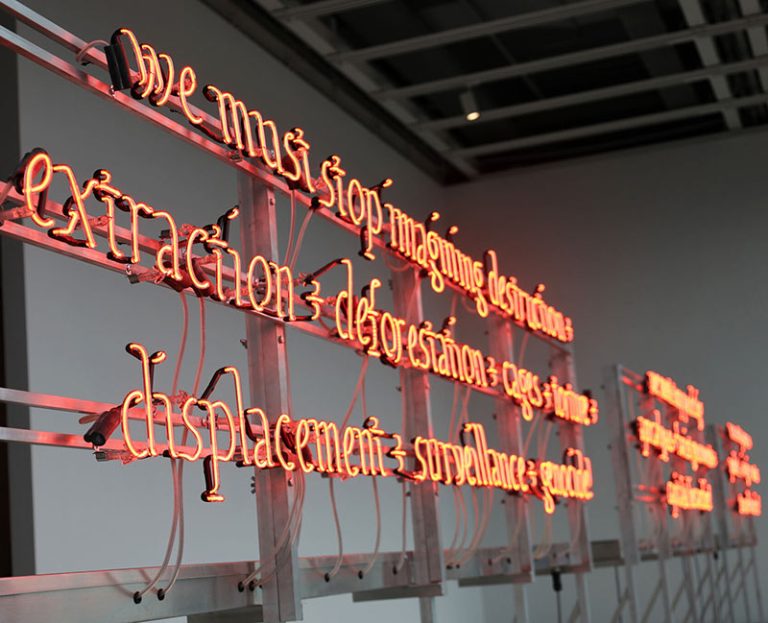Madrid,
In the first months of 2023, La Casa Encendida hosted the project “New power: passability” by the Brazilian artist Maxwell Alexandre, in which this author used yellowish craft paper, very common in his country and called browngranting it political and social connotations: brown is the term commonly used in Brazil to refer to skin tones close to black without actually being black (and originally, to the descendants of African slaves who mixed with Europeans and indigenous people and were neither mestizos nor mulattoes), and its use acquired a vindicating role at a time when, there, the black population was increasingly smaller in number.
The issues surrounding race, now in a broader sense in terms of concept and chronology, return to its programming: Tania Safura Adam would curate the exhibition “A Requiem for Humanity,” which features works by eight international artists and groups. (The Otolith Group, WEB Du Bois, Alice Coltrane, Frida Orupabo, Claudia Claremi, Sybil Coovi Handemagnon, Kongo Astronauts and DW Griffith) and which addresses the cultural, social and legal mechanisms that constructed a vision of inferiority of blackness since the Renaissance to the 20th century and also the need to consolidate a new and alternative mythology that reformulates the future of humanity, a mythology that, for Safura Adam, must also move away from the European humanist tradition to encompass others of diverse origins.
Taking as a starting point texts by Aimé Césaire (Speech on colonialism), Sylvia Wynter and Frantz Fanon, the exhibition suggests that for centuries a conception of the black man was designed as a defect of the white man, comparable at times to animality, and that overcoming this vision in pursuit of equality requires an exercise in intellectual disobedience; Thus, a first section of the route, Dehumanizationanalyzes the mechanisms of construction of this discrimination, and the violence that has entailed, and a second section, Rehumanizationexplores the absence of distinctions that could alleviate them (and that, expanding the theme of the exhibition towards slippery slopes, could imply a dissolution of borders with the alien and even the machine-like).
Halfway between both sections, and under the heading of Writing and Powerwe will find a compendium of publications (essays, poetry and prose) belonging to black authors from Africa and the diaspora, dated between the 18th and 21st centuries, in which this rehumanization is defended: the earliest is Autobiography of a freed African slave, by Olaudah Equiano; Then come texts by Sojourner Truth, Frederick Douglass, Marcus Garvey, Zora Neale Hurston, Anton de Kom, CLR James, Richard Wright, Paulette Nardal, Tony Morrison, Cheikh Anta Diop, Abdías do Nascimento, Angela Davis, Paul Gilroy, Mario Pinto Andrade , Achile Mbembe or Saidiya Hartman.
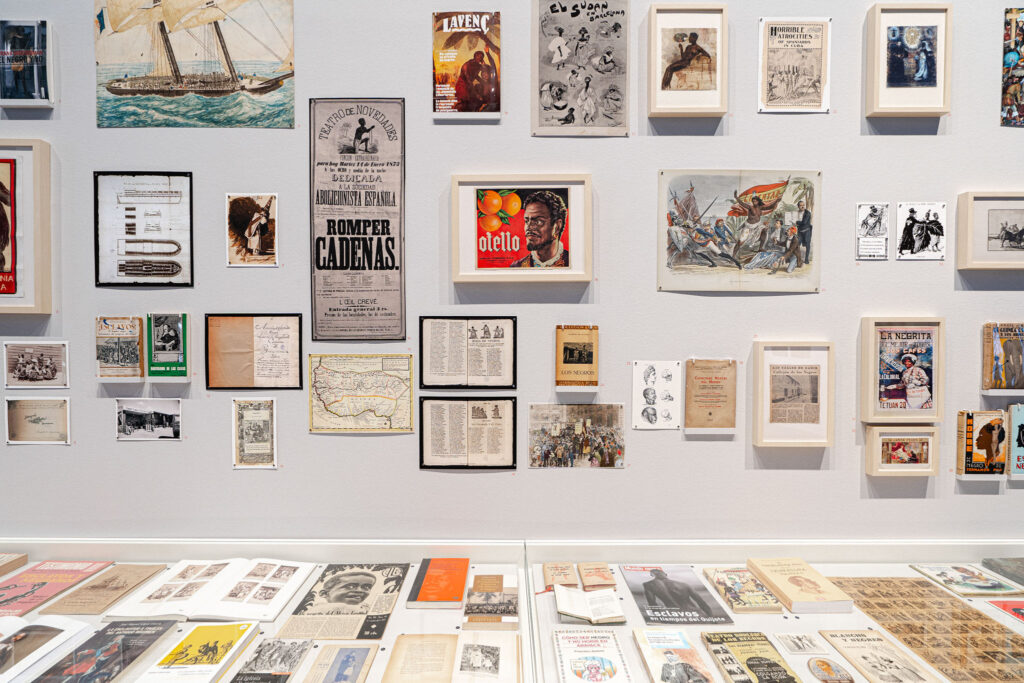
In the first chapter, Sybil Coovi Handemagnon presents in La Casa Encendida Ils/elles vous re-gardent also, a set of animated images based on others from the phrenological collections of the Museum of Man in Paris, through which it analyzes the presence and representation of blackness in the collection of European museums; Claudia Claremi exhibits Colonial amnesia (stupor), a film essay devised based on the Three Kings Parade of Alcoy in which it refers to hidden and frequent forms of racism; and by Frida Orupabo we will see large black and white collages, created from archival material collected from the Internet, in which they refer to the degradation of blackness and, above all, of black women.
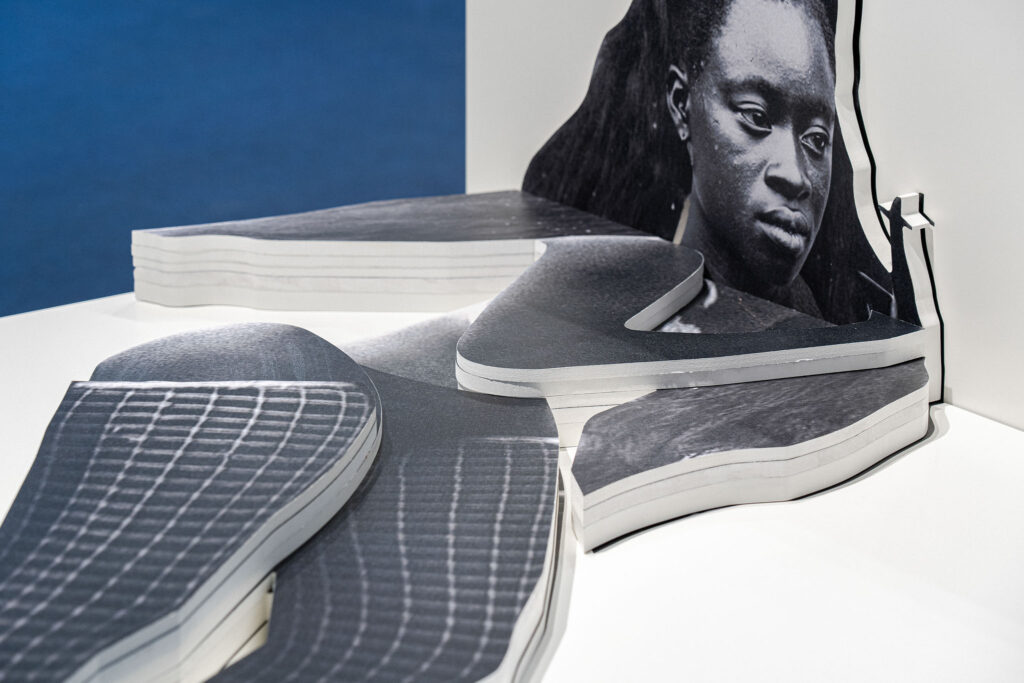
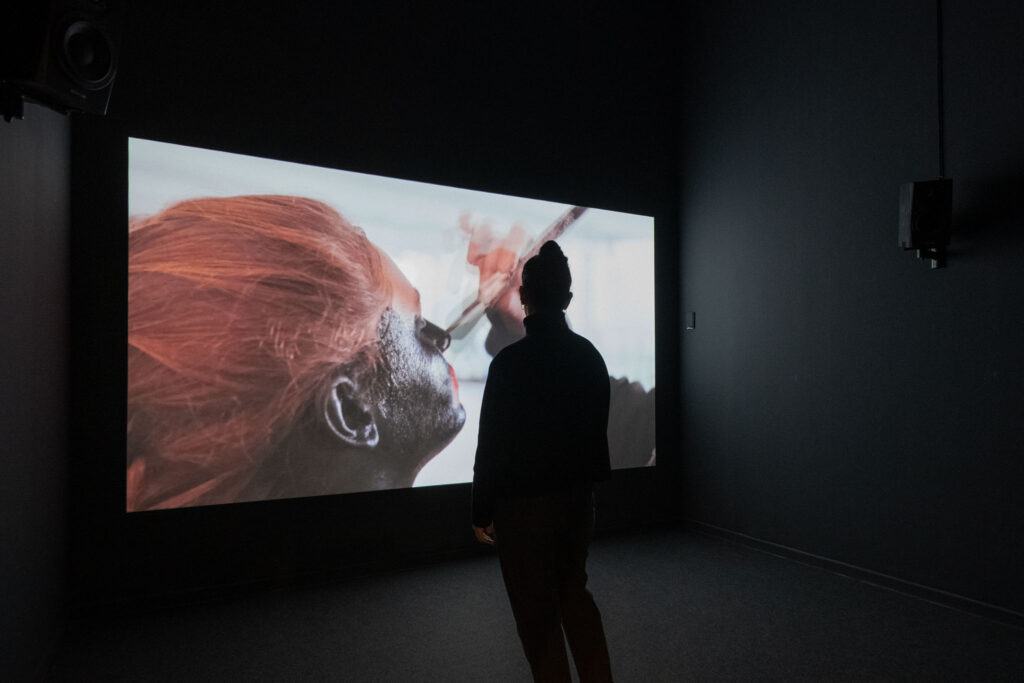
The filmmaker DW Griffith appears in this exhibition, as we could expect, with the help of The birth of a nation, the longest and most elaborate film until its premiere in 1915; also one of the most discussed in history, due to its defense of white supremacy and its praise of members of the Ku Klux Klan. We will also see caste painting from the 18th century: works made in New Spain and the Viceroyalty of Peru, arriving from the Museum of America, which sarcastically refer to the fruits of miscegenation.
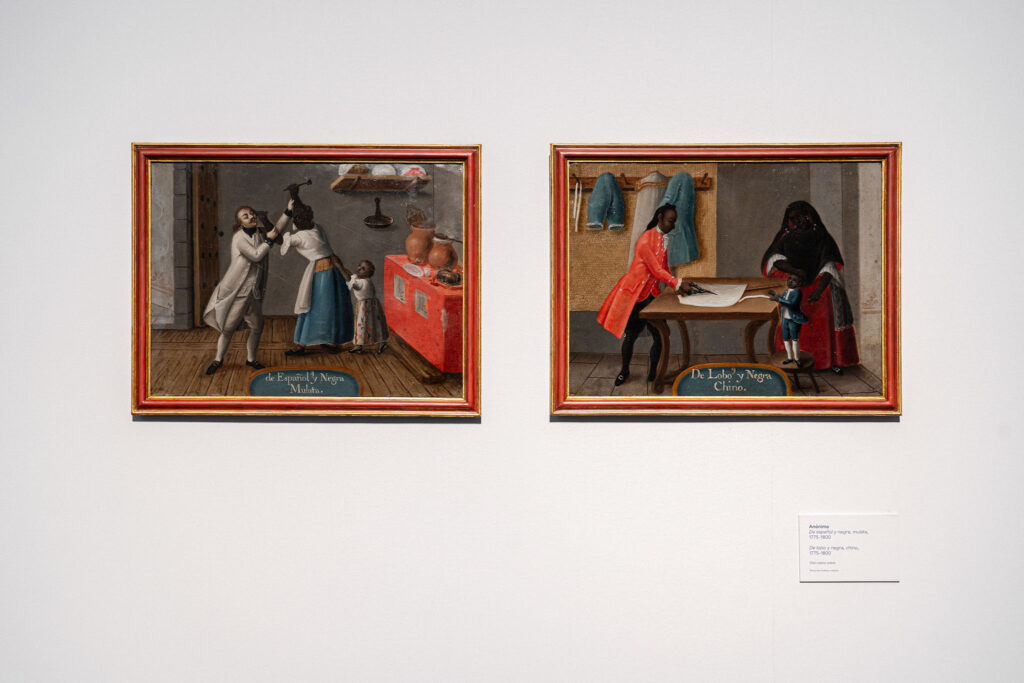
Already in the episode of rehumanization, the film awaits us Hydra Decapitates by The Otolith Group, based on the defunct techno-futurist music group Detroit Drexciya; They imagined an underwater country, called Drexciyasubmerged and populated by the unborn children of pregnant women thrown into the waters during the Middle Passage of slave ships across the Atlantic; also the project Postcolonial Dilemma Track#05 of Kongo Astronauts, a collective linked to the alternative culture of Kinshasa (Democratic Republic of the Congo). They have recreated the descent of a UFO into a Unilever plantation in Lusanga; Its astronaut would regain knowledge helped by a crew of ancestral spirits from the future and all together they would enter an interzone in which cultures overlap while the differences between them fade.
This future of metamorphosis for rehumanization is drawn as science fiction, as a rupture of the codes that today mark our relationship with reality.
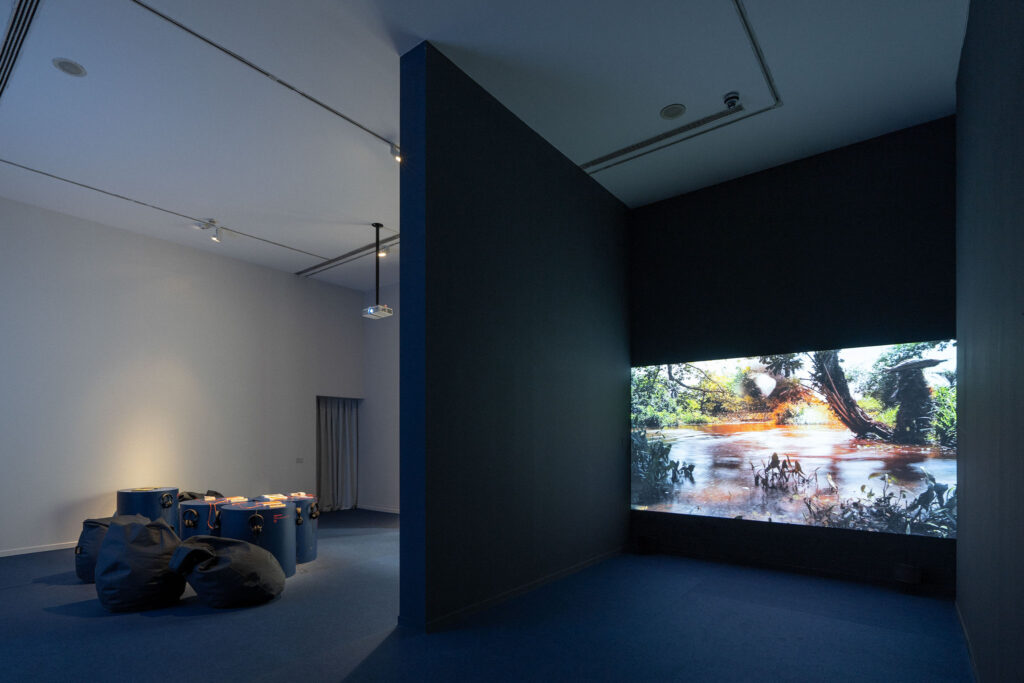
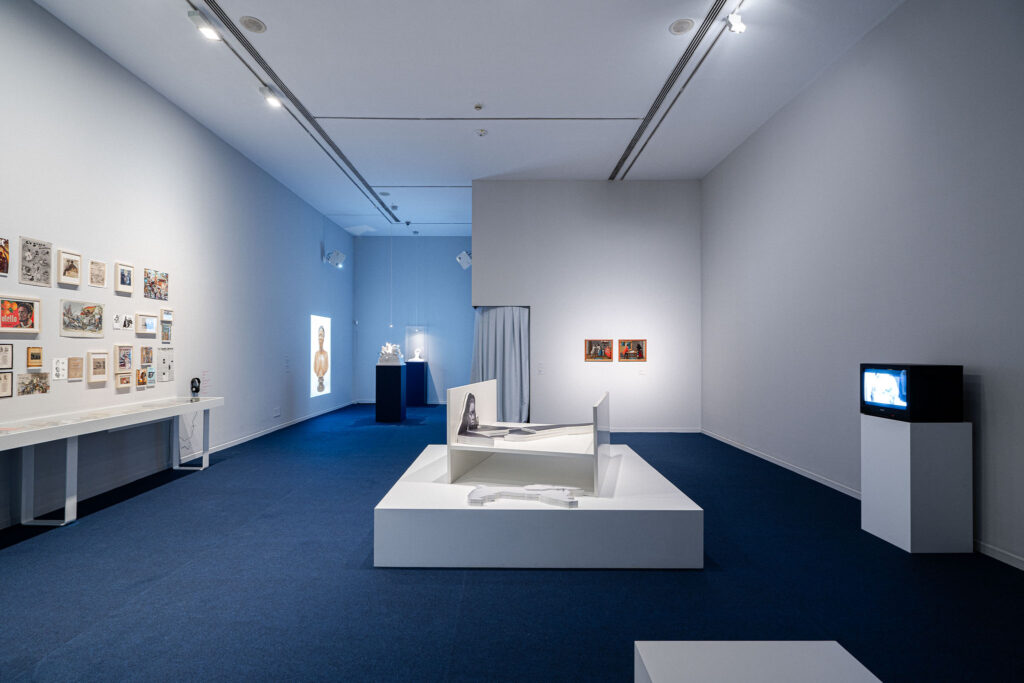
“A requiem for humanity, dehumanizations, power and black futurisms”
THE HOUSE ON
Valencia Round, 2
Madrid
From May 25 to September 15, 2024

